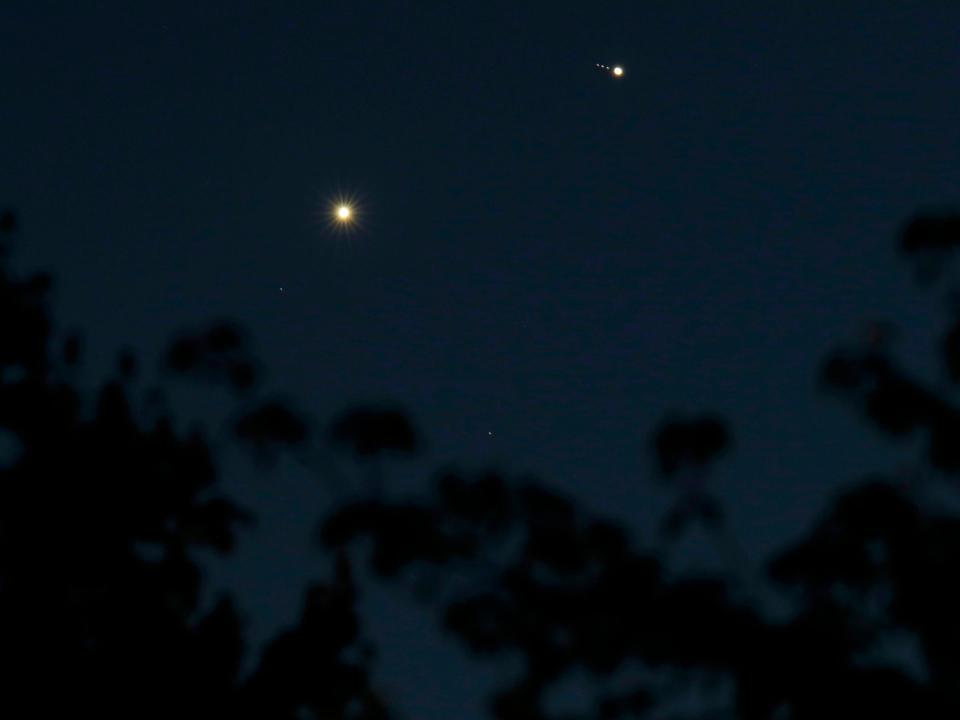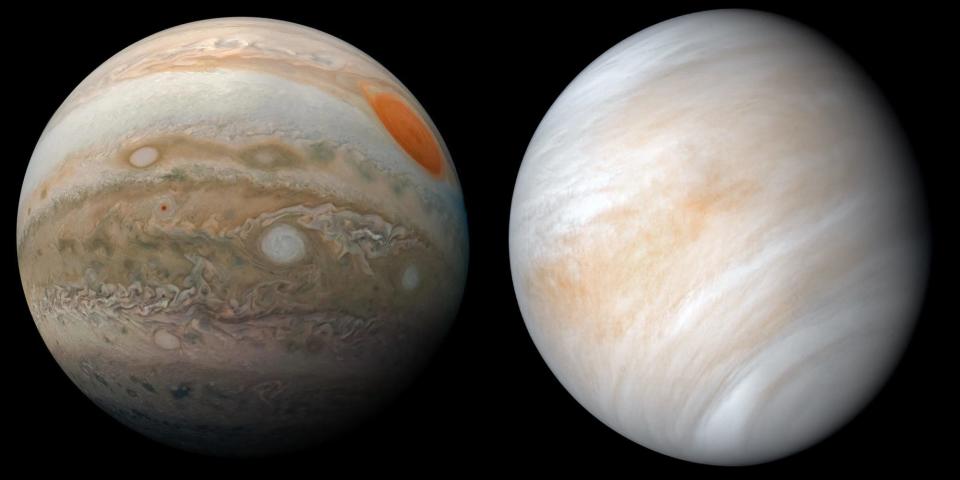How to see the Jupiter-Venus conjunction shining bright enough for the naked eye on Thursday night

Jupiter and Venus appear side-by-side in the sky tonight — your last chance to see the conjunction.
The two planets are brighter than all the stars, so they're visible to the naked eye.
To spot this "spring star" planetary conjunction, look west after sunset.
Jupiter and Venus, the brightest planets in the sky, have inched closer together in the sky for the last several weeks. This dance climaxed after sunset on Wednesday, as the two planets appeared to almost touch — a beautifully-bright Jupiter-Venus conjunction.
But don't despair: The planetary conjunction continues Thursday night. Venus and Jupiter only meet up this way about once every 13 months, so this is your last chance to catch the spectacular event this year.
AccuWeather meteorologist Brian Lada is calling the Jupiter-Venus convergence the "spring star."
—NASA (@NASA) February 24, 2023
That's because the conjunction began on March 1 — the first day of meteorological spring, when temperatures historically start to shift. That's different from astronomical spring, beginning on March 17, which is based on the position of Earth and the sun rather than on weather.
Jupiter and Venus should be visible to the naked eye from almost anywhere on Earth, as long as weather permits and clouds don't block your view. In fact, Venus is the third brightest object in the sky after the sun and moon. Jupiter is the fourth-brightest, which will make for a spectacular visual during the conjunction.
You don't want to miss this spring star.
How to spot Jupiter and Venus in the sky

On March 2, look to the west. Near the horizon, about an hour after sunset, Jupiter and Venus will appear about one degree apart — that's the width of two full moons, or about half the width of your thumb at arm's length, according to the Adler Planetarium.
In other words, extremely close together — so close it may be hard to tell the two apart. But if you look closely, Venus will be on the right and will appear slightly brighter than Jupiter.
Just make sure to glance up at the sky before 10:00 pm EST, or you'll miss it. Both planets will set behind the horizon slightly after 10 pm.
The planets will creep away from each other night after night, Venus rising and Jupiter dropping toward the horizon and the sun.
If it's too cloudy and you can't see it with your own eyes, you can see the conjunction online in a Youtube broadcast from Wednesday, by the Virtual Telescope Project.
On Wednesday night, the planets were within half a degree of each other. According to Space.com, they won't appear that close together for another decade.
Read the original article on Business Insider

 money
money 